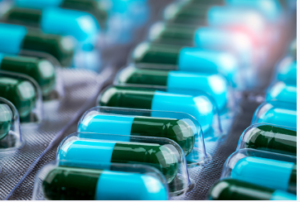PET Packaging for Medicines
PET (polyethylene terephthalate) plastic packaging offers many advantages regarding water, medicine and food product packaging, from its lightweight nature and shatterproof properties, through easy recycling processes to being lightweight and recyclable.
 Barrier Properties
Barrier Properties
www.pharmapac.co.nz PET packaging oxygen-sensitive medicines require a barrier material resistant to oxygen and other contaminants. PET plastic provides an ideal barrier, protecting foods, beverages and medicines against air, moisture and contaminants. As a result, it’s used by pharmaceutical manufacturers and retailers as an efficient packaging material.
PET material offers exceptional barrier properties and impressive mechanical and physical characteristics, such as resistance to thermal stresses, impact strength and stiffness. As a result, PET can be found in various food and beverage packaging applications, including jars, bottles and cans.
PET’s lightweight nature and adaptability allow it to easily form into various shapes and be colour coated for enhanced visuals and product branding.
Polyethylene Terephthalate (PET) is an economical material ideal for packaging a range of products. Due to being strong, durable and clear, polyethylene terephthalate and polyester are Popular in water bottles, carbonated beverages, and food containers.
Researchers are researching extensively on improving PET-based materials for packaging oxygen-sensitive pharmaceutical products. They’ve discovered that replacing a single hydrogen atom with a methyl group creates an easily mouldable polypropylene (PP)-like material – ideal for pharmaceutical packaging applications.
Researchers have observed that adding small amounts of polypropylene (PP) into www.pharmapac.co.nz PET packaging improves its moisture vapour transmission rate (MVTR) and anti-adsorptive property, increasing barrier properties while decreasing costs associated with plastic containers.
Companies are currently working to develop an easy and more cost-effective PET barrier for pharmaceutical products. Their goal is to create materials with reduced material requirements and reduced processing costs to lower consumer costs while protecting the environment.
Lightweight
Plastic is known for being lightweight yet strong, making it the ideal material to package medicine. In addition, PET bottles are shatterproof and easily transportable; they can be customised with labels to help consumers identify them.
PET plastic resin boasts the strongest closed-loop recycling record available today, enabling companies to save money when manufacturing PET bottles and thermoformed units using less resin per bottle and thermoformed units. No other plastic resin comes close in terms of offering such benefits.
PET packaging reduces waste significantly, making it an integral component of a company’s sustainability goals. In addition, a robust closed-loop recycling system enables manufacturers to ensure all their packaging returns to the environment instead of ending up in landfills.
Lighter plastic packaging can help meet production goals quickly while meeting sustainability objectives more quickly. A few strategies exist, such as using less resin and opting for lightweight neck finishes. This approach could also help your company meet sustainability targets rapidly.
Lightweighting is more than just about cutting resin; it can help your business remain future-ready by adapting to forthcoming regulations mandating tethered closures in many markets. Not only can this save resin costs, but it can help reach profitability targets faster too!
Durability
PET plastic is a durable, cost-effective plastic used for packaging applications of many kinds. www.pharmapac.co.nz PET packaging is an ideal choice for an aliphatic polymer with semi-crystalline properties when stable due to its resistance against impact and moisture exposure.
Low permeability also makes Polypropylene an excellent choice for bottles required to withstand high pressure or temperatures and one of the most frequently utilised polymers for beverage and food containers.
PET plastic can be found in numerous everyday products, such as carbonated drink bottles, water bottles, plastic jars and vegetable punnets. Furthermore, food trays and strapping tape may also contain this material.
PET plastic is widely utilised in textile applications. Commonly referred to as polyester, this rugged yet non-toxic and highly durable material can be easily formed into unique shapes with just minimal effort.
Manufacturing involves mixing PET resin with other polymers and pouring it into moulds to produce preforms, then heating and expanding into bottles or other packaging forms.
Producing bottles is relatively quick and efficient, and their finished products can easily be stored and transported worldwide. Therefore, their usage has become widely widespread.
PET plastic is one of the most recycled plastics in the US. It boasts an exceptionally high recycling rate due to its wide variety of uses, durability and ability to incorporate post-consumer recycled content into its design.
Safety
PET, or Polyethylene Terephthalate plastic packaging, is one of the most frequently used plastic materials today. Used to manufacture bottles and containers for food products such as pharmaceuticals, cosmetics, personal care, and dental hygiene items; recycled multiple times. PET plastic has endless reusing opportunities due to its flexibility – recyclable as many times as possible for optimal use!
Manufacturing PET involves condensing two crude oil derivatives – ethylene glycol and terephthalic acid (PTA) – into a thermoplastic polyester. A catalyst, phosphite and bluing agent may be added to this mix to increase strength while decreasing the moisture content of the polymer.
PET can also be found in textile tags as artificial fibres for clothing tags, making PET an excellent material for various applications. PET fibres are strong and resilient – perfect for long-term durability in textile applications.


